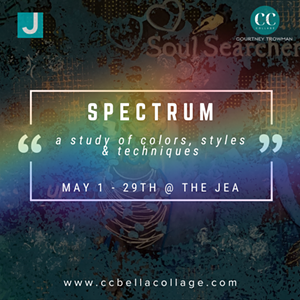Clarification on the Slave Dwelling Project and the Weeping Time
Editor:
This letter responds to “The (Civil) Society” column of September 24-30 concerned with the interest and participation of Savannah area teaching historians in The Slave Dwelling Project’s first annual conference held in Savannah, September 18-20, 2014.
I was there, contributed to the conference proceedings, and left with a number of contacts from which there have already been email exchanges, including several from the project’s principal organizer Joseph McGill. At Armstrong State University I am also a teaching historian.
I learned of the conference for the first time Friday afternoon September 19 from a colleague as the two of us compared notes at the copier of the ASU history department. She asked “had you heard of the slave dwelling conference in town” this weekend.
I confessed I had not, asked for its location, adding “with a little luck perhaps I can catch one or more panels.” I had just polished and mailed off a book manuscript to an academic publisher and was about to settle into a stack of history note paper assignments (a total of 85) my students were anxious to have me read.
I had known of the project with an August invitation from my department chair to join him for lunch on an earlier occasion of Mr. McGill’s visit to the region with a presentation on the project.
Unfortunately, as I also explained to Mr. McGill, my own unfamiliarity with the area resulted in transportation confusion and I missed his earlier visit and the opportunity to meet him. But my chair met with Mr. McGill and invited him to remain in touch with the ASU history department in the development of his project.
Well after the noon hour on Friday as I first learned of the conference it was surely too late to take in the afternoon panel sessions so I put off a decision to attend.
However, Saturday morning, with a second cup of coffee, deferring my reading obligations to my students, I decided to take in what I could of the project’s conference and I am glad I did.
Dr. Kwesi DeGraft-Hanson’s “Hidden Landscapes of Slavery in Coastal Georgia” was one of the several discussions in which I was able to participate. This presentation was of special interest to me because of the work students in Armstrong State University’s public history program have been doing for several years with the last of the dwellings of Coastal Georgia’s formerly enslaved, cemeteries.
Dr. DeGraft-Hanson’s Powerpoint presentation in a conference subtitled “Weeping Times” effectively reminded his audience of the commemorative opportunities coastal Georgia’s landscape offered taking us to Darien, Georgia’s plantation grounds to make observations about the historical significance of these unmarked places.
At the close of Dr. Degraft-Hanson’s lecture, invited with others to offer comments, I shared my privileged involvement with ASU’s graduate student Lori Morgan’s (now M.A.) work commemorating the Petersville Cemetery located just outside Darien.
Petersville was a community of emancipated African Americans and the cemetery became the place of their weeping times as Morgan’s work so ably established. As a result of her work, word is the Georgia Historical Society will erect a historical marker at the cemetery’s location.
I also shared my privilege even earlier working with a group of Armstrong Public History students that a little more than two years ago documented the “Old Negro Burial Grounds” (talk about ground zero) located beneath the streets of the Historic District about which too little is generally known.
In fact this burial dwelling ground beneath Whitefield Square is best known in and about Savannah as a place to hold wedding ceremonies. It might also be known as the first of the last dwelling places in Savannah’s coastal cultural history for those who were formerly enslaved.
In 1763 “for the convenience of a burial ground for negroes,” as ASU students Candace McNeal, Austin Rahn, Liam Murphy and Kelsey Monagham documented the City appropriated this space “as the burial place for people of color” a research project these students extended to the year of the burial grounds closing in 1853.
Two years ago, the student’s research project was published with the ASU History Department’s Journal of History with other topics of local historical interest.
So as far as the “local” interest among teaching historians in the Slave Dwelling Project at ASU is concerned I have to say, Mr. McGill if accurately quoted is mistaken.
Not only was the ASU’s department of history expressly interested in the work the project promotes—before and during the conference—but for some time even earlier actively developing historical knowledge and understanding about the sacred dwelling places and spaces with which the project is concerned.
Michael Benjamin, PhD.




















